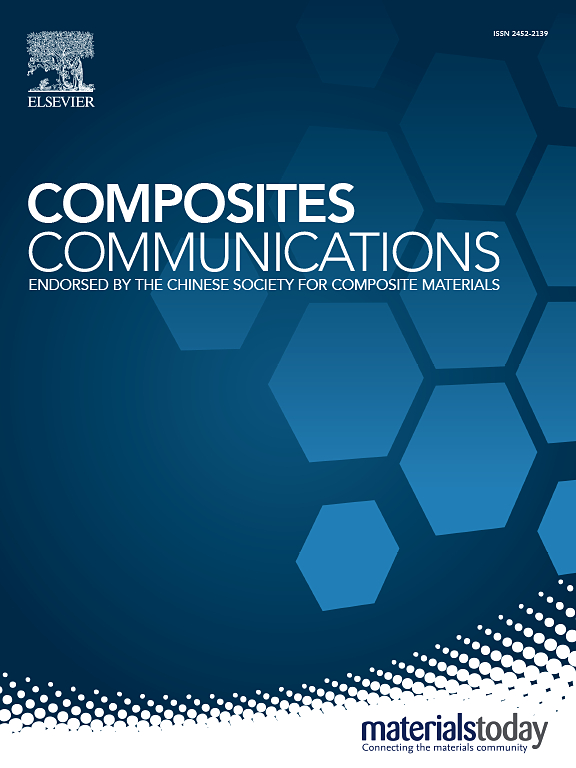Carbon-carbon materials composed of carbon nanofibers grown inside the macro-/mesoporous matrix of carbon xerogels
IF 6.5
2区 材料科学
Q1 MATERIALS SCIENCE, COMPOSITES
引用次数: 0
Abstract
This paper reports the synthesis and characterization of carbon-carbon composites based on carbon xerogels with different porosity and carbon nanofibers. Initial carbon xerogels were prepared by pyrolysis in an inert atmosphere of organic xerogels synthesized via a resorcinol-formaldehyde polycondensation route. Carbon nanofibers were grown inside the xerogel matrix by means of catalytic chemical vapor deposition of ethylene on dispersed nickel particles. Two approaches, such as an incipient wetness impregnation and a one-pot synthesis, were used for doping carbon xerogels with nickel. The kinetics of the carbon accumulation were studied in a reactor equipped with McBain balances. The activation energy values estimated for two regions with different carbon accumulation rates were found to be 80 and 100 kJ/mol. In the second region, the higher activation barrier is explained by the deactivation of nickel particles due to their partial blockage by amorphous carbon deposits. The porous structure of initial carbon xerogels was found to affect both the carbon accumulation rate and the carbon yield. Thus, the carbon yield values of 47.1–58.5 g/gNi at 450–470 °C were obtained in the case of macroporous xerogel. The content of CNFs in the composites influences their textural characteristics. The optimal CNF loadings were found to be 25 wt% for CX-meso and 45 wt% for CX-macro. In these cases, the carbon deposition procedure should last 3 and 7 min, respectively. Since the grown carbon filaments are characterized by a coaxial-conical morphology, the carbon-carbon composite materials possess a more ordered structure than as-prepared xerogels.
求助全文
约1分钟内获得全文
求助全文
来源期刊

Composites Communications
Materials Science-Ceramics and Composites
CiteScore
12.10
自引率
10.00%
发文量
340
审稿时长
36 days
期刊介绍:
Composites Communications (Compos. Commun.) is a peer-reviewed journal publishing short communications and letters on the latest advances in composites science and technology. With a rapid review and publication process, its goal is to disseminate new knowledge promptly within the composites community. The journal welcomes manuscripts presenting creative concepts and new findings in design, state-of-the-art approaches in processing, synthesis, characterization, and mechanics modeling. In addition to traditional fiber-/particulate-reinforced engineering composites, it encourages submissions on composites with exceptional physical, mechanical, and fracture properties, as well as those with unique functions and significant application potential. This includes biomimetic and bio-inspired composites for biomedical applications, functional nano-composites for thermal management and energy applications, and composites designed for extreme service environments.
 求助内容:
求助内容: 应助结果提醒方式:
应助结果提醒方式:


